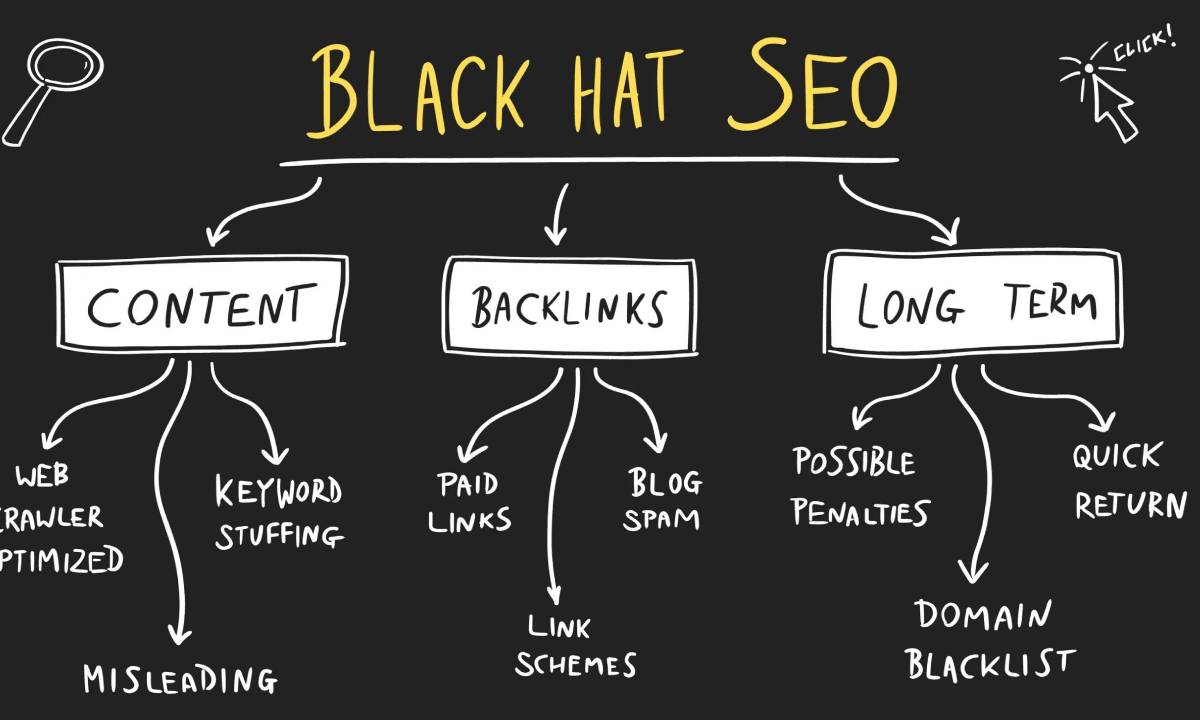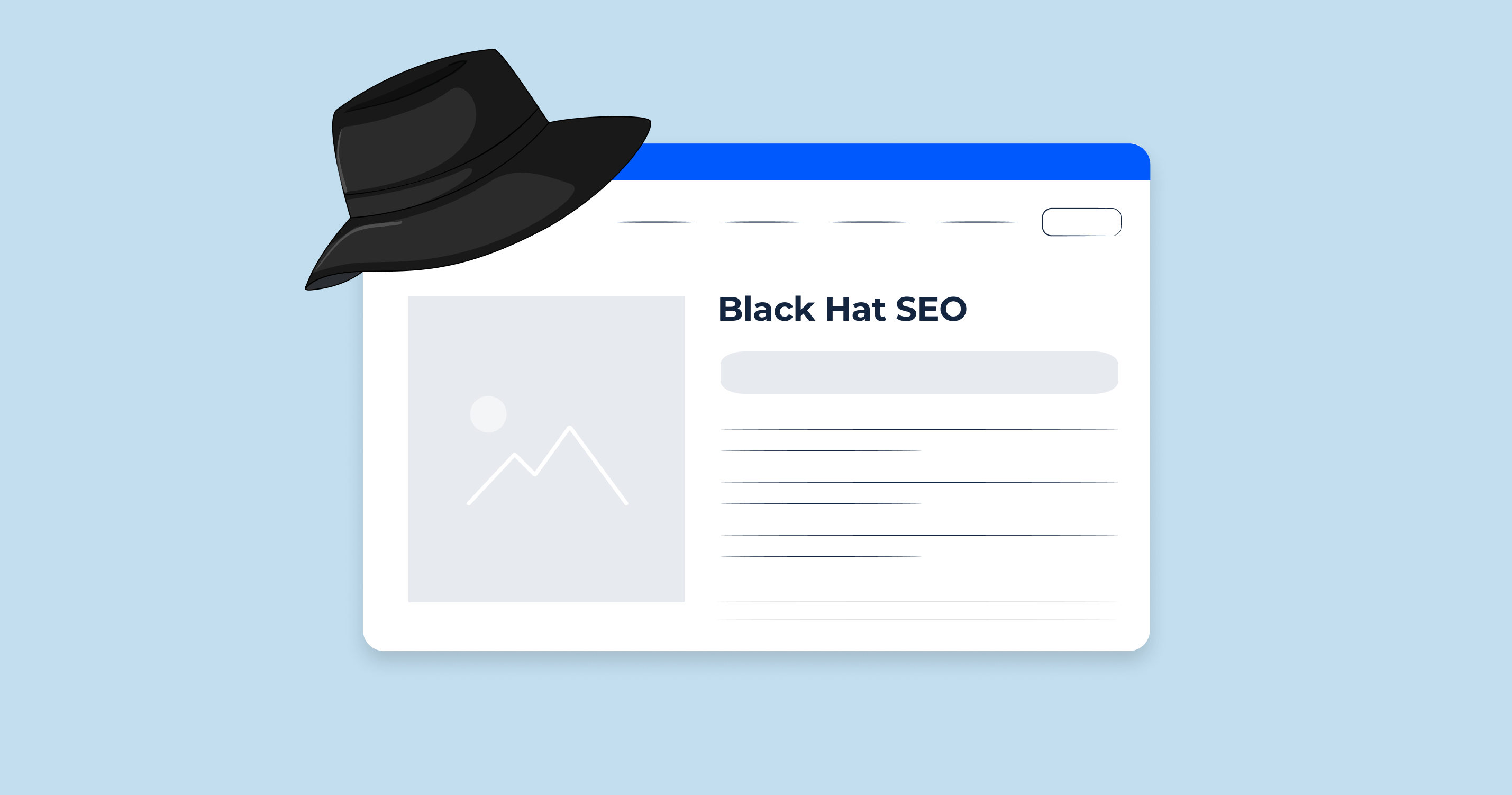
This being the case, there are some people and firms that employ unscrupulous means of optimizing their websites for SERP status, which is a act considered as black hat SEO. While cases of white hat SEO involve the improvement of content and the enhancement of the usability with respect to the search engine standards, cases of black hat SEO involve attempts to circumvent the search engine mechanisms. Here’s what this blog will explore; Black hat SEO strategies, their short-term gains and the long-term consequences.
Understanding Black Hat SEO

Black hat SEO therefore deals with maximizing on the opportunities of SEO with respect to the search engine results page rankings through unfair means. Such methods focus on obtaining faster results in comparison with proper SEO practices and standards, which is often accompanied by a deterioration of content quality and user experience on the websites that employ these tricks.
Some of the real mischievous practices of blacks in the SEO technique are as follows:
- Keyword Stuffing
Definition: A practice of placing a number of keywords or numbers on a single page in order to influence a specific website’s position in the Google SERPs.
Example: Use of keywords too many times when writing the text, tags or the alt attributes of images in a way that it appears to be very mundane.
Consequence: Organic traffic is direct traffic from the search engines where the search engine may demote or even black list a particular website from its database.
Definition: Submitting different content or URLs to the human users and search engines.
Example: An example is a website that displays a page of HTML text to the spider while it displays a page of images or a Flash movie to the visitor.
Consequence: The above untruths can attract serious consequences such as delisting from search engine result pages, if not completely removed from the indices.
Private Blog Networks (PBNs)

Definition: Linking between the multiple sites and associating them with a single site in an attempt to obtain a high ranking.
Example: Having more than one fake website and linking them to pass a link juice to the main site.
Consequence: The signals that PBNs used to relay are increasingly getting detected by search engines. Notably, once the violations are detected, the sanctions are severe, and they apply to all the related websites.
Hidden Text and Links

Definition: A process of concealing a text or links on a webpage, to make changed impact on the rankings of the search engine but not on the visible web content to users.
Example: Who inserting white text on a white background where you can barely see it, having their font size set to zero, or placing text behind images.
Consequence: That can result in penalties as search engines are focused on delivering fair and objective algorithms for ranking.
Link Farms
Definition: A set of websites that refer to each other to obtain a higher link popularity.
Example: Developing a number of sites of poor quality that are related through hidden links for the purpose of attaining a high rank.
Consequence: The search engines can demote link farms, and any website associated with it they may drop their ranking quite considerably.
Doorway Pages

Definition: Publishing many pages that are of poor quality but are aimed at gaining top rankings for selected keywords that lead to the main page.
Example: Web pages primarily designed for the sole purpose of getting search engine traffic and re-directing the visitors to another website.
Consequence: This deceitful behavior will most probably be punished, that is, one will lose traffic and, thus, credibility.
Content Automation

Definition: Produce content with the help of programs that function like computers and decide by themselves that there is no human intervention required.
Example: Talking articles and trucks, spinning to make hundreds of horrible versions of the original content.
Consequence: Most automated content is usually of low quality and irrelevant to the users thus causing poor user experience and in some cases search engine penalties.
Comment Spam

Definition: Creating comments that have no content or that do not relate to the blog post or any forum post that is being made, but only to have a link back to the spammer’s website.
Example: Open several blogs or forums, likely not related to your niche and write hundreds of comments ad litteram with links.
Consequence: Many a time it is easily distinguishable and if severe it invites punishment such as banning of the website from relevant and reputable site.
And that is why Black Hat SEO, in this article and throughout this website, is classified as dangerous and risky.
While black hat SEO techniques might offer quick gains, they come with significant risks that far outweigh any temporary benefits:
- Search Engine Penalties: Top and popular search engines such as Google use advanced algorithms that help in identifying black hat SEO techniques and sanctions them. Possible consequences may vary starting from a rank reduction or even de-indexation of the website.
- Damage to Reputation: As mentioned before, once a website has been penalized, it is rather difficult to restore the trust and the reputation of the website to be used as a reliable source by the search engines and the visitors. Thus, it can be concluded that having a bad reputation has long-term consequences for a business.
- Poor User Experience: Some of the black hat practices produce low-quality content and provide poor user experience, meaning, therefore very high bounce rate, and poor engagement.
- Legal Consequences: Occasionally the engaging of deceptive practices may result to a legal problem particularly if the infringement of copyrights, or any other intellectual property is involved.
Ethical SEO as a Counterpart to Black Hat SEO

To build a sustainable and reputable online presence, consider these white hat SEO practices:
Quality Content Creation: Concentrate on making contended which can be valuable, relevant and engaging to the target customers.
Keyword Optimization: Ensure that the incorporation of the keywords is as natural as possible, again appearing where the readers will find them helpful and not where they will be a nuisance.
Link Building: Gather a large amount of backlinks on a regular basis through guest posting, partnership, and developing sharable content.
Technical SEO: Address other factors which are technical factors like website speed loading, responsiveness of website to mobile devices and use of secure connections/links (HTTPs).
User Experience (UX): Place an emphasis on usability for the user, meaning easy to traverse site map, quick loading time, and mobile ready.
Conclusion
As much as black hat SEO strategies may come in handy in enhancing your site’s ranking on SERPs, they have significant demerits that may negatively affect your website in the long run. Thus, using ethical and ‘white hat’ approaches to SEO will result in better results that are sustainable, positively perceived by users, and long-lasting in terms of the place occupied in search rankings. Thus, concentrating on such aspects as quality content, satisfied users, and white SEO tricks, you can create a proper base and do not risk using the tricks of black SEO.




